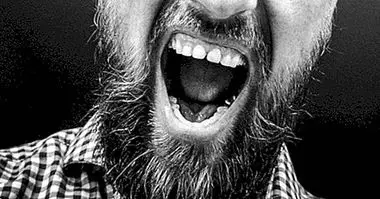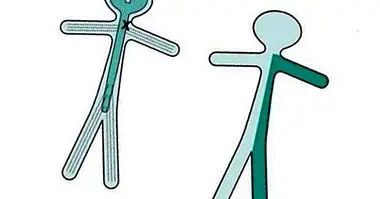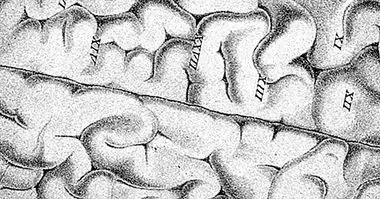11 obsessions and typical compulsions in OCD
If you think about Obsessive-compulsive disorder Maybe the image of the maniac Melvin Udall dodging tiles in your head comes to mind Best impossible (As good as it gets).
The great Jack Nicholson appears in the film obsessed with order and neatness, perfectly aligning his walking shoes at home, or being unable to go to bed without having thrown the four locks on the door several times. These rituals are only a small example of the multiple manias that the novelist presents, his life being articulated around them.
- Related article: "Obsessive-Compulsive Disorder (OCD): what is it?"
What is Obsessive-compulsive disorder?
Obsessive-compulsive disorder, popularly known as OCD, is a disorder characterized by obsessive thoughts and compulsive actions such as cleaning, checking, ordering or accumulating excessively.
Obsessions are thoughts, images or impulses repetitive and unwanted that cause anxiety and discomfort to people with OCD. The obsessions occur in an invasive way, independently of the will of the person, and they become so frequent and incapacitating that they can completely dominate the life of those who suffer from OCD.
The person who has these obsessive thoughts tries to ignore or suppress them. For this purpose, he performs the compulsions or compulsive rituals, which have the objective of neutralizing the obsessions and their dreaded consequences.
Compulsions are like motor or cognitive behaviors (pray, count numbers) repetitive that are made according to certain rules, stereotyped. The purpose of these behaviors or thoughts is to prevent or reduce anguish, or to avoid a feared situation or event.
- Related article: "10 signs and symptoms of people with OCD"
Most frequent obsessions
Among the most common obsessions in the TOC are, among others, those related to dirt and contamination, order and checking.
1. Pollution ideas
One of the most common types of obsessions are pollution obsessions. These are characterized by a exaggerated fear of dirt , to germs, to get infected or to contract a disease.
Many times the fear in these patients can be to feel dirty, and can spend a lot of time to wash. These ideas may be focused on another person as well, such as fearing that a loved one may become ill or die from infection or germs.
- Related article: "Obsession for cleanliness: causes, characteristics and advice"
2. Need for pathological verification or doubt
The obsession of these individuals consists of constantly check that they have not had an oversight that makes them responsible for the feared negative consequences, for example causing a fire by forgetting to turn off the stove, leaving the tap open, or not lock when leaving home.
Excessive doubt and the need to check commonly lead to checking rituals.
3. Necessity of order or symmetry
In this case the concern is arrange or order things "perfectly" , perform certain activities in an exact, symmetrical or balanced manner, such as parking properly or ordering clothes meticulously.
The thought that is at the base of the obsessive idea is: "It is absolutely essential that everything be ordered and in place."
4. Aggressive and sexual obsessions
These individuals present excessive fear of doing damage to others or commit an unacceptable sexual act such as thinking that they can stab a loved one, fantasize about sexually abusing someone or an exaggerated fear of being homosexual.
Many are horrified by their obsessions and do not comment on them for shame, mistakenly believing that thinking something objectionable is equivalent to doing it.
5. Religious obsessions
The excessive fear in this case is based on commit sins, blaspheme , not praying enough, fear of going to hell or not being forgiven, etc. The behaviors or compulsions that they carry out to eliminate their anxiety may be to pray repeatedly or go to church numerous times.
Compulsions or most frequent rituals
Next we describe the most commonly described rituals in OCD cases. Many of these types of compulsion are directly related to the obsessions described above.
1. Cleaning
Washing is the most frequent compulsion associated with the pollution obsession . People with this type of compulsion can wipe their hands too often, just like Melvin Udall did, who washed his hands three times in a row each time he returned home and used different new soaps that he then threw away.
Other examples are: brush your teeth excessively, avoid using public toilets or perform a thorough cleaning of the home for fear of germs. This behavior typically occurs after contact or proximity to the contaminated object.
2. Of order or symmetry
The ritual seeks to alleviate a fear that if something is not done something will happen , or mitigate the unpleasant feeling that things are not as they should be. These compulsive actions are derived from the need for symmetry or order.
Some examples would be to avoid stepping on black tiles, ordering things according to predetermined criteria, etc.
3. Repeat
Individuals are characterized by Repeat insistently phrases or behaviors , for the belief that this will prevent the dreaded catastrophe from happening. They may want to always follow certain routines, such as always eating at the same table in the same cafeteria, or always going to work along the same path.
4. Accumulation
In this type of OCD the person has the need to save all kinds of elements attending to its possible utility in the future. They can accumulate a lot of unnecessary things like old newspapers, empty bottles or cardboard boxes.
5. Checking
They focus on prevent the occurrence of possible catastrophes . They are associated with pathological doubt and the need for verification.
In general those who perform these rituals tend to use the strategy of reinsurance, asking nearby people things like "Have you seen me put out the fire?" Or "I closed the door of home?".
6. Mental compulsions
They are thoughts or mental acts that, like observable behavior, are performed to neutralize or reduce the anxiety caused by the obsession. It is common repeat words, phrases or numbers in order to relieve the anguish.
Mental compulsions are often confused with obsessions because they are covert behaviors rather than motor behaviors; the fundamental difference is that obsessions generate anxiety and compulsions reduce or prevent it.
Bibliographic references:
- American Psychiatric Association (2013). Diagnostic and Statistical Manual of Mental Disorders, Fifth Edition (DSM-5).



















